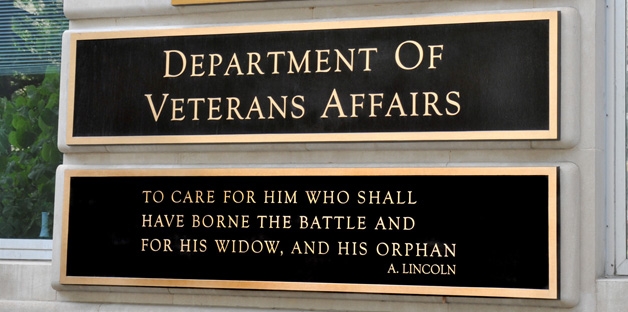IAVA | February 3, 2014
Read: Red Tape Report: The Fight to End the VA Backlog Lessons Learned and New Actions Needed

A week ago, the President re-affirmed his commitment to ending the backlog in the State of the Union address. Today, IAVA is releasing its 2014 Red Tape Report: The Battle to End the VA Backlog. This report analyzes the issue and provides recommendations on how to not only end the backlog, but to make sure it never happens again. No veteran should ever have to wait.
Key findings of the report include:
- In the last decade, the disability compensation system was not continually evaluated and updated, resulting in a system that was not prepared to handle an influx of claims resulting from 1) an older generation of veterans submitting claims for injuries revealed with age, 2) new veterans entering the system as a result of the post-9/11 wars, and 3) expansion of the schedule of conditions covered by the VA, including Agent Orange exposure and PTSD. All of these factors resulted in an influx of claims and growing backlog over the last years.
- Between March and December 2013, the VA decreased the backlog by 36.5%, yet backlogged claims still represent over 50% of the total claims pending at the VA.
- The VA has made some notable, though overdue, reforms, including automating the system and streamlining processing through initiatives like the segmented lanes and fully developed claims. However, without specific goals for success and measures that demonstrate whether those goals are being met, there is no informed way to make sure the disability compensation system can handle continued and growing demands without causing veterans to wait over 125 days.
- With approximately 400,000 veterans still in the backlog, more must be done to bring it to zero. The Red Tape Report includes a series of specific recommendations focused around:
- Improving communication
- Continuing to advance automation
- Enhancing evaluation
- Anticipating future need of both the Veteran Benefits Administration and veterans
The United States has made a long-standing commitment to its veterans to compensate them for injuries and illnesses sustained as a result of their service through the Department of Veterans Affairs (VA) disability compensation system. However, over the last decade, the number of disability compensation claims filed ballooned and the VA has struggled to keep up. In March 2013, the backlog peaked with over 600,000 claims waiting over 125 days. Since then, the VA has implemented a number of initiatives to bring the backlog down. Yet, after a surge of progress, in recent months this progress has stalled. For the second and third quarters of CY 2013, the VA decreased the backlog on average by 7,000 and 8,000 claims, respectively. In the fourth quarter of CY 2013, that number dropped to 2,500. Since mid-November, the backlog has hovered around 400,000.
Today the VA released its workload report for the week of January 26th – February 1st. The number of backlogged claims fell to 401,017, a decrease of 4,168. The number of pending claims dropped to 672,061. IAVA is pleased to see a greater decline in the backlog this week, but based on the performance over the last few months, is concerned that the changes made thus far to the disability claims system will not be enough to ensure that the backlog ends and never returns. More attention needs to be given to long-term planning and continual evaluation to make sure that this goal is met.
IAVA’s Red Tape Report defines the VA disability compensation system and its backlog, re-examines challenges to the system and the changes made thus far, and makes needed recommendations to both end the backlog and more importantly, never see it return.
The goal to end the VA backlog by 2015 is a critical milestone. Yet, there will still be veterans filing disability claims beyond 2015. There continues to be thousands waiting who are not even part of the backlog. Currently more than 265,000 veterans are waiting on appeals in addition to the thousands of wounded ill and injured veterans waiting in the integrated disability evaluation system. The VA must look beyond 2015 and focus on the needs of the entire population for decades to come.





